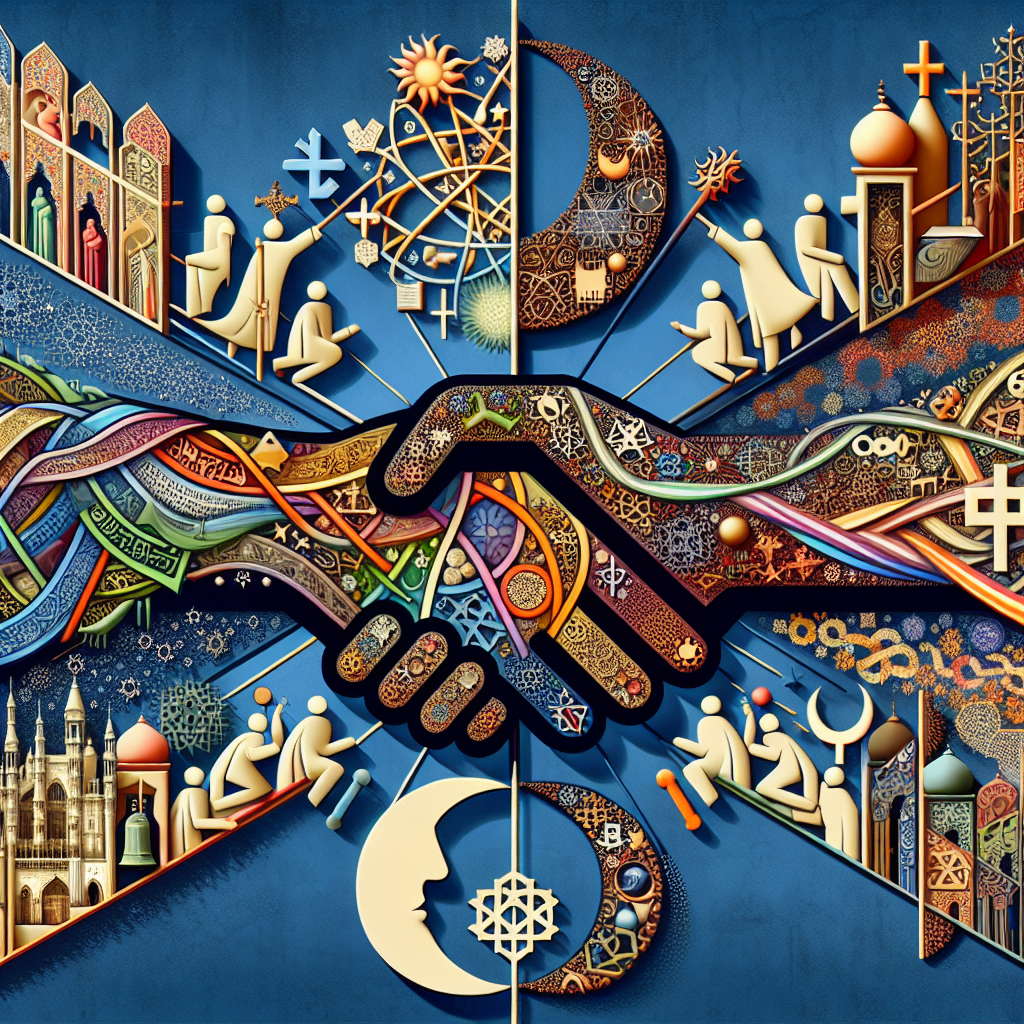Interfaith Dialogue vs. Religious Conflict: A Path to Unity
In today’s interconnected world, the clash of religions can often be seen in headlines around the globe. However, beneath the waves of conflict lies a profound potential for dialogue, mutual respect, and ultimately, the spiritual unity we so urgently need. This article delves deep into the concept of interfaith dialogue, exploring its significance, benefits, and the distinction it offers against religious conflict. We will also uncover how fostering mutual respect among varying faiths can pave the way toward a more united spiritual landscape.
The Importance of Interfaith Dialogue
Interfaith dialogue serves as a crucial mechanism through which diverse religious communities can engage with each other, share their beliefs, and find common ground. It is essential to recognize that dialogue is not merely about agreeing on every belief; rather, it is about fostering respect for differing perspectives. This dialogue holds the potential to break down barriers that have historically divided communities, transforming fear and misunderstanding into knowledge and empathy.
In many parts of the world, religious conflicts arise from ignorance or misinformation. For instance, understanding others’ beliefs can significantly reduce the prejudices that often lead to violence. Initiatives like the United Nations’ World Interfaith Harmony Week highlight the power of interfaith dialogue in promoting peace and harmony among peoples of various faiths.
Understanding Religious Conflict
Religious conflict has been a part of human history for centuries, often fueled by political, economic, and social factors rather than faith itself. It’s important to differentiate between the core tenets of religions and the actions of individuals or groups who may misinterpret or misrepresent those beliefs. Most religious traditions advocate for peace, compassion, and love, yet these ideals can be overshadowed by radical ideologies leading to conflict.
For example, the Crusades were driven not solely by religious motivations but were intertwined with political aims and territorial conquests. Thus, understanding the deeper context behind religious conflicts is vital for fostering peace through union spiritual efforts.
How Interfaith Dialogue Facilitates Unity
Interfaith dialogue is more than just conversation; it is about creating connections that spark understanding and respect among diverse faith communities. It encourages individuals to share personal stories and practices that highlight their religious experiences, offering a rich tapestry of beliefs from which everyone can learn. Through this exchange, communities can build partnerships that transcend their differences.
A powerful example comes from the Interfaith Observer, which documents various initiatives where individuals of different faiths come together to celebrate their diversity. These gatherings showcase music, art, and shared meals, emphasizing the common humanity that unites all religious followers.
Benefits of Respect in Interfaith Dialogue
The significance of respect in interfaith dialogue cannot be overstated. When participants approach each other with an open heart and mind, the potential for healing and reconciliation expands tremendously. Here are some benefits that arise from fostering a culture of respect:
- Building Trust: Respectful dialogue fosters trust between communities, breaking down stereotypes and building relationships.
- Encouraging Collaboration: Respect leads to collaborative efforts in addressing social issues such as poverty, injustice, and discrimination.
- Promoting Tolerance: Understanding differing beliefs nurtures tolerance, allowing individuals to coexist peacefully.
Real-World Examples of Successful Interfaith Initiatives
Numerous case studies illustrate how interfaith dialogue can lead to constructive outcomes. For instance, the AARP’s Interfaith and Intergenerational Initiative promotes conversations among various faith groups, addressing issues like aging and community care. Through these discussions, volunteers and leaders from different backgrounds come together to learn from each other, paving the way for mutual support and understanding.
Checklist for Engaging in Interfaith Dialogue
To facilitate meaningful interfaith dialogue, consider the following checklist:
- Identify common values: What beliefs unite us?
- Practice active listening: Allow others to express their views without interruption.
- Encourage open-mindedness: Be willing to learn from others.
- Share personal stories: Personal narratives can humanize discussions and foster empathy.
- Set goals for collaboration: Identify issues you can tackle together.
The Role of Technology in Promoting Dialogue
In recent years, technology has transformed how interfaith dialogue occurs. Online platforms enable people from different backgrounds to connect and share ideas in innovative ways. Social media campaigns, webinars, and online forums promote global participation, breaking geographical barriers. For example, the Global Interfaith Network provides a platform for discussions that span continents, promoting shared learning and respect among diverse faiths.
Future Trends in Interfaith Cooperation
Looking ahead, several trends indicate a growing focus on interfaith cooperation. As the world becomes increasingly globalized and interconnected, the demand for interfaith dialogue will only rise. Here are some notable trends:
| Trend | Description |
|---|---|
| Increased Advocacy | More organizations advocating for interfaith understanding in local communities. |
| Interfaith Education | Enhanced curriculum in schools that incorporates interfaith studies. |
| Global Conferences | Increased participation in global interfaith conferences addressing pressing issues like climate change. |
Addressing Misconceptions About Interfaith Dialogue
One of the significant barriers to interfaith dialogue is the presence of misconceptions. Addressing these misunderstandings is crucial for fostering a culture of respect and collaboration. Here are some common misconceptions:
- Interfaith dialogue means compromising beliefs: Engaging in dialogue does not require abandoning faith principles; it’s about understanding others.
- It’s only for religious leaders: Anyone interested in promoting peace can participate in dialogue.
- It leads to conflict: With the right approach, dialogue is a tool for building bridges, not walls.
Frequently Asked Questions about Interfaith Dialogue
As interfaith dialogue evolves, several questions often arise. Here are some of the most common inquiries:
- What is the main goal of interfaith dialogue? The primary goal is to promote understanding, respect, and coexistence among different faith traditions.
- Can interfaith dialogue actually reduce conflict? Yes, by fostering understanding and respect, dialogue can help prevent misunderstandings that lead to conflict.
- How can I get involved in interfaith initiatives? Many local organizations and online communities offer opportunities for engagement. Look for community events or join relevant online forums.
- Are there successful examples of interfaith collaboration? Yes, numerous projects focus on social issues, environmental concerns, and humanitarian efforts that involve interfaith collaboration.
- Does interfaith dialogue require formal training? While training can help, a genuine willingness to listen and learn is often enough to get started.
- How can I promote respect in my community? Lead by example, engage in community discussions, and encourage open dialogue within your networks.
Conclusion: Embracing a Path to Unity
The journey towards fostering a culture of respect and union spiritual through interfaith dialogue is not only essential for personal growth but also for the collective future of humanity. By engaging with one another across faiths, we dismantle barriers and build a foundation of understanding that can lead to real change. In a world often marked by division, let us recharge our commitment to dialogue, actively seek out opportunities for connection, and embrace our shared humanity. Only through unity can we hope to create a harmonious world where every faith is respected and valued.
As you reflect on the insights shared in this article, consider how you can become a catalyst for interfaith dialogue in your own community. The path to unity is not always easy, but it is undoubtedly worth pursuing.

